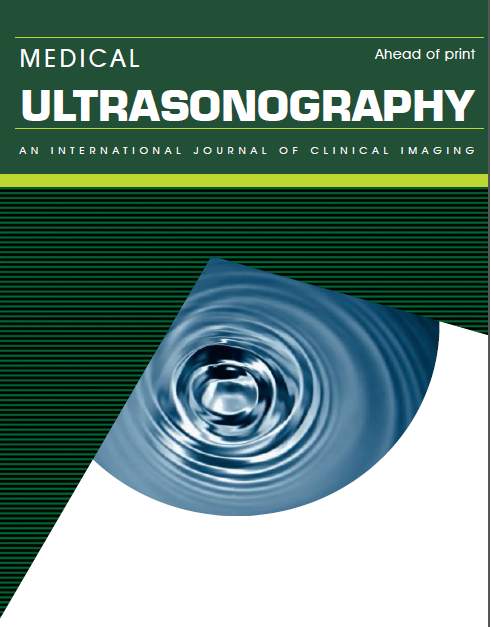The role of color histograms in predicting the prognosis of patients with digestive tract adenocarcinoma
Abstract
Objectives: To establish the correlation between the degree of vascularisation detected using power Doppler ultrasonography in digestive tract adenocarcinoma and the prognosis of these patients. Material and method: Ultrasonography was performed in 45 patients diagnosed with digestive tract adenocarcinoma (16 stomach-35.6%, 6 cecum and ascending colon-13.3%, 2 transverse colon- 4.4%, 5 descending colon 11.1%, 13 sigmoid colon-28.9%, and 3 rectum-6.7%). The degree of maximum tumor vascularization was determined using the highest percentage of colored pixels obtained in the histogram- maximum color pixels density (MCPD). The hepatic Doppler perfusion index (HDPI) was also calculated. The presence and development of liver metastases was evaluated by ultrasonography and computed tomography. The patients were monitored for a period of 18 months. The results of each method in detecting and predicting the development of liver metastases were compared. Results: MCPD and HDPI had fairly similar results (p>0.05) in establishing the positive and negative predicting values for the entire group of patients with liver metastasis (55.9% compared to 66.7%, p>0.05, and 53.3%, compared to 54.6%, p>0.05) and the group that developed liver metastases during follow-up (80.0% compared to 90.0%, p>0.05, and 61.5%, compared to 75.0%, p>0.05). When comparing MCPD and HDPI for the group of patients who had or developed metastases, MCPD had an equal sensitivity (86.4%, compared to 90.9%, p >0.05), a higher specificity (65.0% compared to 46.5%, p0.05.). Conclusions: The calculation of MCPD using color histograms can be a simple and quick method in the evaluation and prognosis of patients with digestive tract adenocarcinoma.
Refbacks
- There are currently no refbacks.




